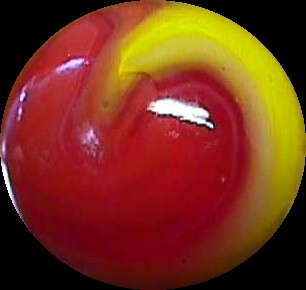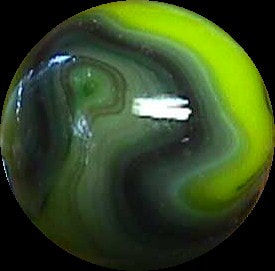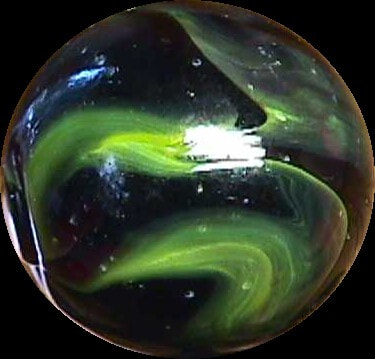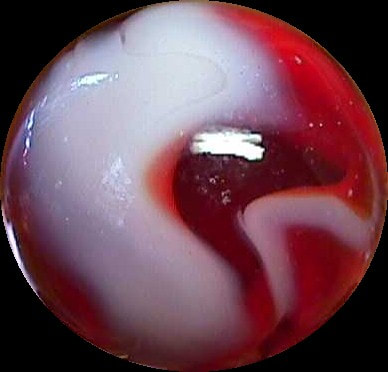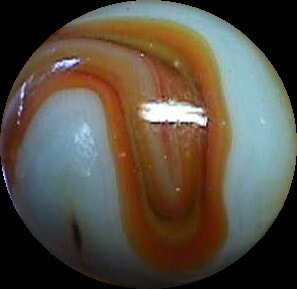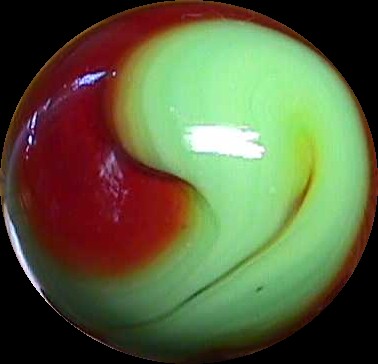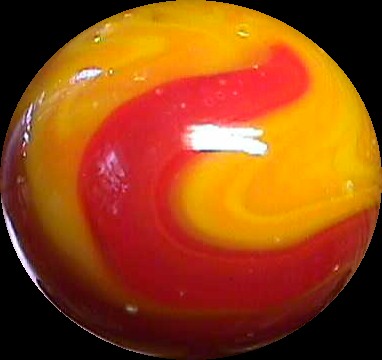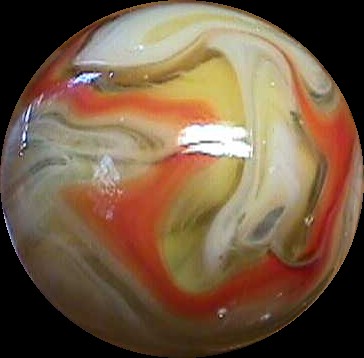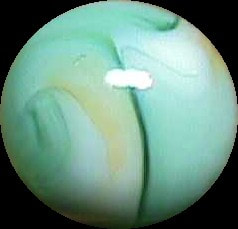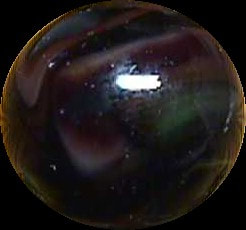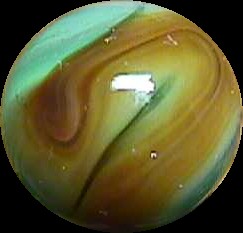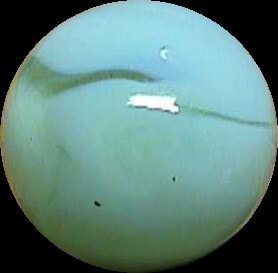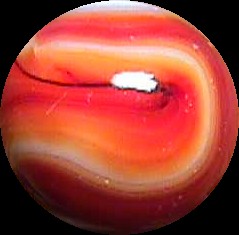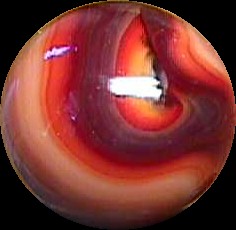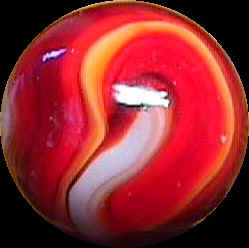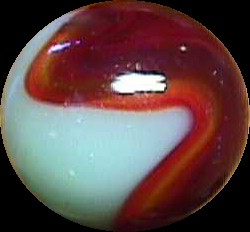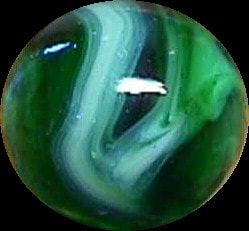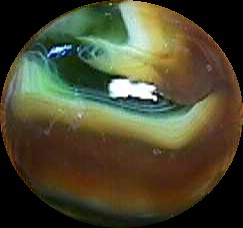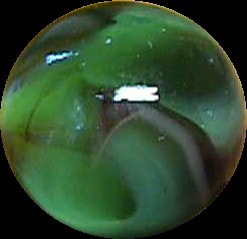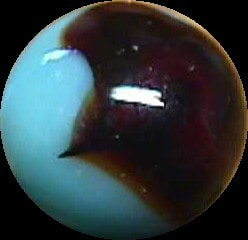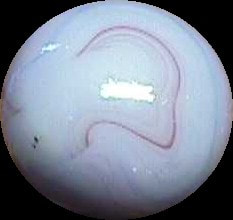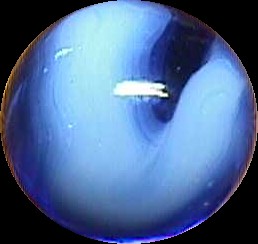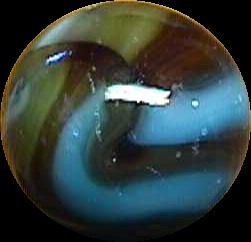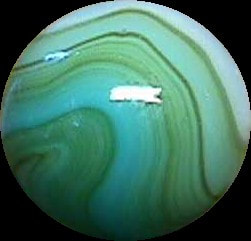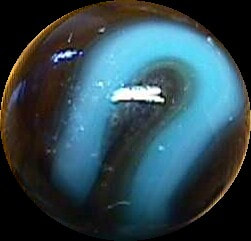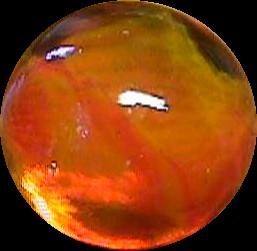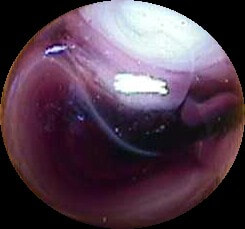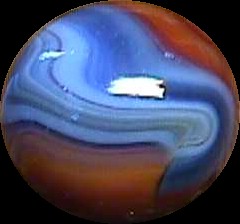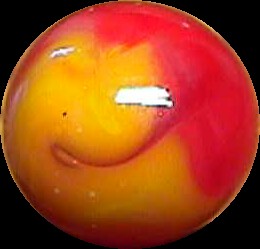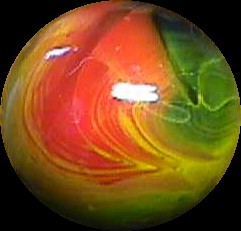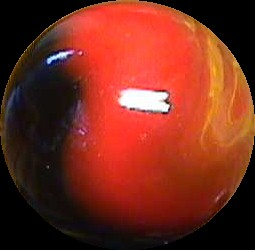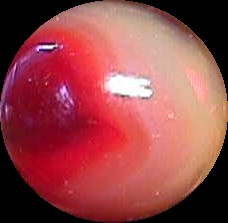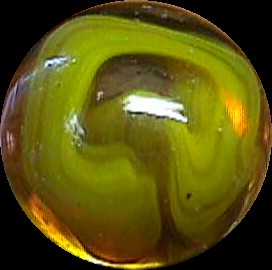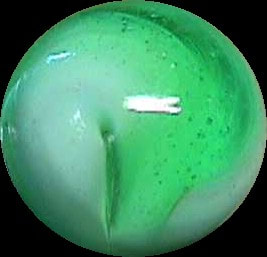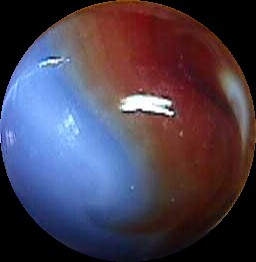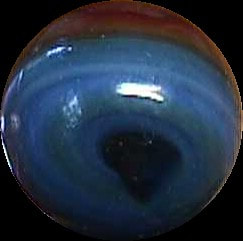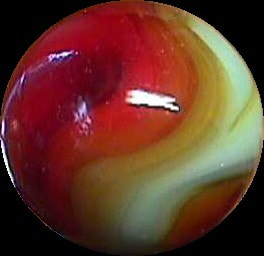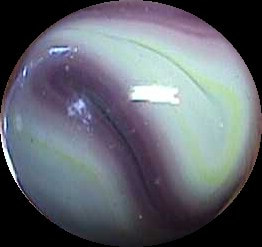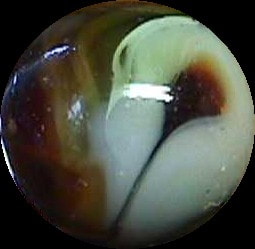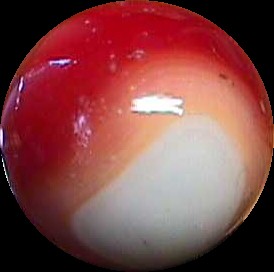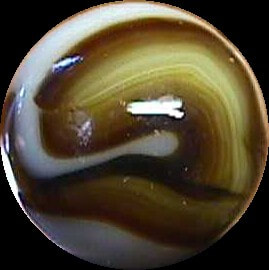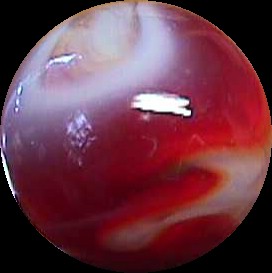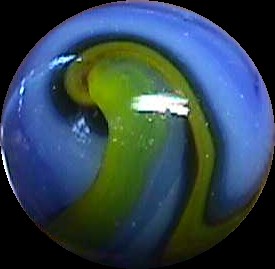JABO-VITRO AGATE, INC. (1987-?)
COMPANY HISTORY
As discussed on the Heaton Agate Company page, Jabo, Inc. arose from what had been the Bogard Company and before that the Heaton Agate Company. The marble company, reorganized by Jack Bogard, Dave McCullough, and Joanne Argabrite in 1987, was moved to Reno, Ohio. Then, in 1996, the company bought out Vitro Agate; it operated under the title of Jabo-Vitro Agate, Inc.
Both Jabo, Inc. and its new incarnation as Jabo-Vitro Agate, Inc. produced mainly industrial marbles. However, from time to time the company released mostly limited runs of swirl type marbles, thanks to the skills brought to the company by McCullough, formerly of Champion Agate. Often called "Classics," these marbles are often fluorescent and are distinct from previous runs. Currently, many of the limited runs are still being sold individually or in sets.
As discussed on the Heaton Agate Company page, Jabo, Inc. arose from what had been the Bogard Company and before that the Heaton Agate Company. The marble company, reorganized by Jack Bogard, Dave McCullough, and Joanne Argabrite in 1987, was moved to Reno, Ohio. Then, in 1996, the company bought out Vitro Agate; it operated under the title of Jabo-Vitro Agate, Inc.
Both Jabo, Inc. and its new incarnation as Jabo-Vitro Agate, Inc. produced mainly industrial marbles. However, from time to time the company released mostly limited runs of swirl type marbles, thanks to the skills brought to the company by McCullough, formerly of Champion Agate. Often called "Classics," these marbles are often fluorescent and are distinct from previous runs. Currently, many of the limited runs are still being sold individually or in sets.
IDENTIFICATION TIPS
The only Jabo-Vitro marbles that are truly of any interest to collectors are their limited run swirls, called "Classics" by the company. These come in a bewildering array of color combinations, though some of the combinations are restricted in quantity to fewer than 50,000 marbles. It would be virtually impossible to catalog all the different color combinations, though a representative sample can be seen below in the Jabo-Vitro Gallery.
Jabo-Vitro swirls can often be easily identified by the tiny white hit marks that very often can be seen on the marbles. This is a result of the soft glass being bruised as the marbles fall down the chutes from the machinery into the collection bins.
Most Classics are around 5/8" in size, though some are as small as 1/2" and some as large as 1". Many of the swirl patterns form "U"s and "V"s reminiscent of early Vitro Agate marbles, and poorly defined "turkey" swirls are often present. Jabo-Vitro swirls can often be differentiated from the swirls by other companies not only by these characteristics but by the glass. Quite often, the glass is fluorescent and may glow either orange or yellow. The colors, too, are distinctive, and are usually not opaque but rather are transparent or translucent. Sometimes the glass will have a milky or cloudy appearance. The colors often swirl deeply inside the base glass, though frequently they sem to be brushed on the surface.
Once a collector has seen a few Jabo-Vitro marbles, he/she will be able to tell immediately whether or not a marble is by that company. However, many new collectors mistake these marbles for older, and much more expensive, marbles by companies such as Christensen Agate.
ORIGINAL PACKAGING
Some poly bags and decorative sets were sold. Most commonly by secondary sellers.
The only Jabo-Vitro marbles that are truly of any interest to collectors are their limited run swirls, called "Classics" by the company. These come in a bewildering array of color combinations, though some of the combinations are restricted in quantity to fewer than 50,000 marbles. It would be virtually impossible to catalog all the different color combinations, though a representative sample can be seen below in the Jabo-Vitro Gallery.
Jabo-Vitro swirls can often be easily identified by the tiny white hit marks that very often can be seen on the marbles. This is a result of the soft glass being bruised as the marbles fall down the chutes from the machinery into the collection bins.
Most Classics are around 5/8" in size, though some are as small as 1/2" and some as large as 1". Many of the swirl patterns form "U"s and "V"s reminiscent of early Vitro Agate marbles, and poorly defined "turkey" swirls are often present. Jabo-Vitro swirls can often be differentiated from the swirls by other companies not only by these characteristics but by the glass. Quite often, the glass is fluorescent and may glow either orange or yellow. The colors, too, are distinctive, and are usually not opaque but rather are transparent or translucent. Sometimes the glass will have a milky or cloudy appearance. The colors often swirl deeply inside the base glass, though frequently they sem to be brushed on the surface.
Once a collector has seen a few Jabo-Vitro marbles, he/she will be able to tell immediately whether or not a marble is by that company. However, many new collectors mistake these marbles for older, and much more expensive, marbles by companies such as Christensen Agate.
ORIGINAL PACKAGING
Some poly bags and decorative sets were sold. Most commonly by secondary sellers.
JABO GALLERY - EARLY TO MID 1990S PRODUCTION RUNS
(Hover your mouse or lightly touch the image to see the type of marble. Click to view the full size image)
(Hover your mouse or lightly touch the image to see the type of marble. Click to view the full size image)

